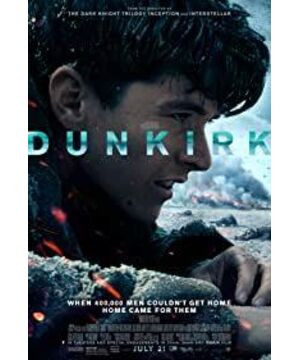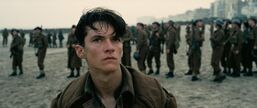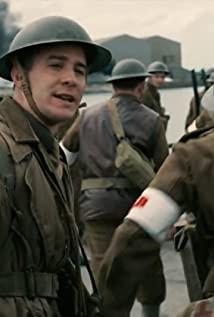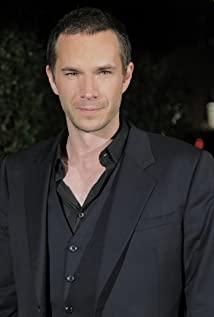Dunkirk begins with two scenes showing the enormous randomness .
In one scene, the hero and his teammates were chased and beaten by the enemy on the street.
No enemy can be seen in the picture, only the male protagonist and his teammates can be seen running for their lives on the street. The street is very quiet, only the cold gunshots follow one after another, and the teammates fall one by one. It's uncertain who will get hit and never get up again.
The other was on the beach of Dunkirk, where a large number of British and French troops were waiting for rescue to retreat.
A roar in the sky approached, and all the soldiers immediately fell down, and then the shells fell. The landing point may be 100 meters away, and you can only see a burst of flames in the distance; maybe 10 meters away, the blasted sand and stones hit you. On the body, you saw the companion who just greeted him being blown into two pieces; it may also be on you, and your eyes are completely dark.
In our daily life, we can experience the randomness of death and misfortune to some extent, so we say "death and life are impermanent", "tomorrow and death do not know which will come first". In the extraordinary state of war, the randomness of death is infinitely magnified, and no moment can be as profound and powerless as war, that death is God rolling the dice.
Years of science study have made me form a thinking concept: the world is a huge probability model, and randomness is inevitable. This randomness is partly caused by the complexity of life, and while humans love causality, they can't figure out all the details behind everything.
Probability provides a good reason for being lazy. Anyway, if you can't "know why", you will feel that it is a random event. For example, the war is so cruel, the soldiers have no control over their own destiny.
But Nolan did not.
In this film, Nolan confronts random complexities with genius cinematic narrative language and clarifies cause and effect.
He used 3 timelines:
"A week" on the beach of Dunkirk, the timeline of the 400,000 soldiers (including the male protagonist Tommy) waiting for rescue;
The "one day" of the civilian boat "Moonstone" that came to rescue at sea, the time line of the owner, Mr. Dawson, and others;
"One Hour" of a RAF aircraft, a timeline of pilot Farrell et al.
The time in the real world has been precisely processed, and it no longer develops linearly in the film, nor does it flow uniformly, and has an approximate time quality for a week, a day, and an hour.
As the film progresses, the three timelines slowly converge. When we reach the end, we realize that death may be God rolling the dice, but survived because a group of brave ordinary people fought against God.
As the owner, Mr. Dawson, sailed firmly towards Dunkirk, the Moonstone rescued the pilot and the fallen soldiers at sea.
Because of the protection of the pilots at the cost of their lives, the Moonstone was able to save so many people and save the small ships that had arrived at the port from the bombing of German warplanes.
Because so many civilian boats arrived at Dunkirk, more than 300,000 soldiers were brought back to the motherland - and Prime Minister Churchill only planned to rescue 30,000 at first.
War is provoked by human beings, but it has its own vitality and development is not controlled by human beings. More and more people are constantly being involved, and the lives of those involved are beyond their control. The war makes people's perception very divided. Every individual is a living life, but it is only some cold numbers strategized by the leaders. Life is heavier than Mount Tai and lighter than a feather.
Soldiers of the motherland on the other side of the sea are waiting to be rescued, and if no one comes to rescue them, young people will die. Faced with this situation, many people made their own choices at different times, and in the end time brought them to the same end.
At sea, the male protagonist Tommy and other soldiers climbed aboard the Moonstone in oil. Mr. Dawson's son Peter and the pilot who had rescued before helped pull the soldiers on board from the sea, while Mr. Dawson was firmly at the helm and returned to the voyage.
The shock and warmth brought by the film also intersected and covered like dense sea water, and the touching was difficult to dissipate for a long time.
At different times, different soldiers must have climbed into different boats, and many Mr. Dawsons were firmly at the helm and returned.
Every life that survives is because of the great efforts of someone behind it.
When we could only surrender to time, Nolan became the master of time. He processed and combined it at will, creating not only a work of art, but also an exquisite mathematical model, which was slowly revealed in film language. The causal logic behind probabilistic events, which is really fascinating.
The Dunkirk viewing experience is addictive, emotionally charged yet peaceful . Even years later, I still remember the feeling of being expanded at that moment.
Time, sea water, mathematics, each of which is vast, and when Peter pulls Tommy from the sea, they slowly blend in Nolan's film.
Mathematics is beautiful, and Nolan perfectly expresses this abstract beauty with film art.
There is a lot to discuss about Dunkirk.
Its spiritual core, its perspective on war, its scripted characters...
Everything is amazing.
If you want to ask how good it is, it is too good to be grateful that there is Nolan in this era, and the genius is only 47 years old.
The world is God throwing dice, and Nolan gives us a glimpse into God's secrets.
Strong, strong, strongly recommend everyone to watch the movie.
View more about Dunkirk reviews











